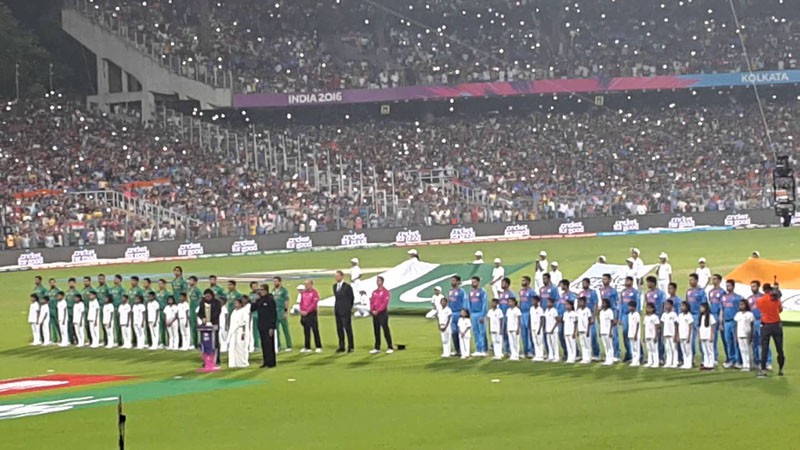
An attachment to the national anthem will foster attachment to the country and instil a spirit of patriotism

Ever since my childhood I have often wondered about our national anthem and the extent to which the common man understands it. As a child, I hardly understood more than a few words, and was always amazed why our neighbour, Mrs Kishwer, was mentioned in the anthem. Growing up, I realised that almost everyone I knew simply memorised it and rattled it off unthinkingly when the occasion arose, without much emotional or intellectual connection. Hence, I was not surprised when maestro Shafqat Amanat Ali mispronounced a few of its words at a recent cricket match in Kolkata, since he also must have just memorised the words as a child and then jumbled them up when he got into the hot seat as a solo performer.
Taking cue from the Shafqat Ali incident, I initiated a debate on the anthem in one of my classes. My aim was to see how much have students thought about the anthem, how do they feel about it, and whether they even understand it. When asked only three out of nearly a hundred said that they understood ‘most’ of the anthem, while some revealed that they perhaps do not even know all the words even now. When the debate took shape, several students argued that the anthem should be translated into Urdu so that the general population might understand it (the anthem being primarily in Persian), while others argued that we need a new anthem which speaks about the country’s diversity, its different provinces, peoples, etc.
The debate raises some critical issues for us as a nation, which we must address if we are to achieve true national unity and cohesion.
National anthems are a fairly new phenomenon, becoming popular in nineteenth century Europe. The most famous national anthem is God Save the Queen (or King) of the United Kingdom which was first performed in 1744-5, but has never been adopted as the anthem by Royal Proclamation or Act of Parliament; it has simply become official through customary use. Similarly the anthem of the Netherlands, first used during the Dutch revolt in the sixteenth century, did not become official till 1932. Other countries have had music without lyrics (such as Spain), while some have adopted hymns or other music as anthems.
Regardless of origin, the main purpose of an anthem is to provide a focus and rouse the feeling of patriotism and love for the country. I am sure many of us are witness to scenes where people are moved to tears during a rendition of their national anthem.
Talking to the students it was clear that very few of them had any emotional connection with their national anthem. One factor is certainly its rather stern military tune, which gives a very standoffish feeling. However, the most important reason is it unintelligibility to the common man.
The anthem was written at a time when a large number of the educated population of Pakistan knew a bit of Persian, and so it made sense for it to be in an erudite sophisticated classical language. Now sadly, Persian is hardly understood in Pakistan, and even proper Urdu is rarely spoken or understood (the joke being that either a ‘proper Urdu wala’ is from Karachi or India). Hence, while we cannot change the anthem easily, perhaps we can attempt to make the current anthem more accessible. Perhaps schools need to make teachers teach the meaning of the anthem to their students, explain to them its lyrical and idiomatic qualities, and enable them to ‘own’ the anthem as their own.
An attachment to the national anthem will, I hope, also foster attachment to the country and instil a spirit of patriotism, rather than jingoistic nationalism. We have an abundance of hatred of the other, be it of India or Afghanistan or even Iran, and lost in this hatred is the love for this land itself. The time has come for us to recentre our nation on a love of our land -- our Sohni Dharti, as one national song says it, rather than on a rejection or hatred of the other. And where else to begin than with our national anthem.